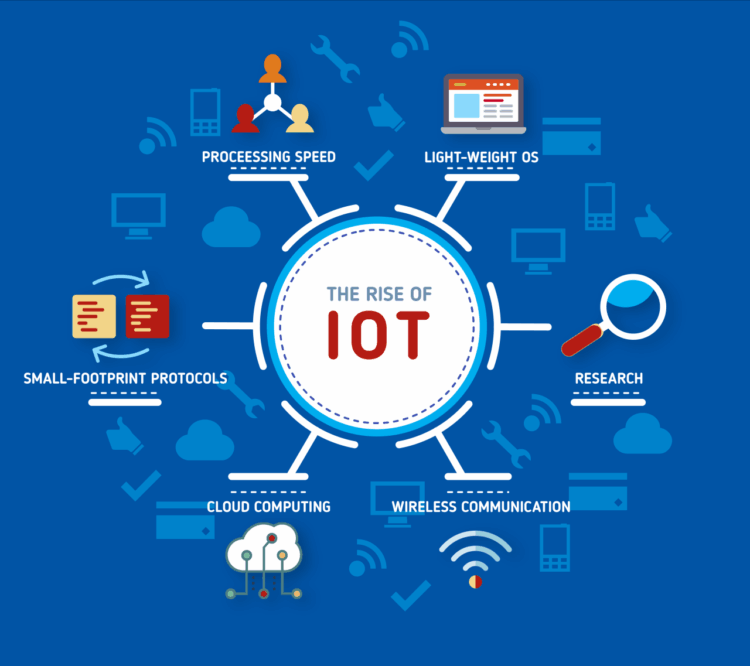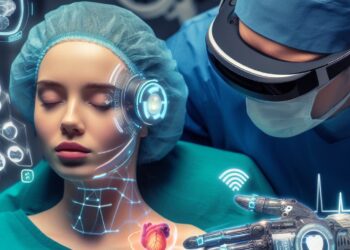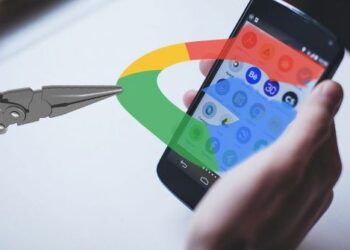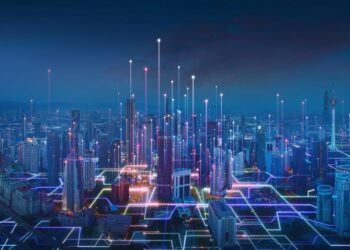The Internet of Things, or IoT, is no longer a concept of the distant future; it is the present reality that is quietly and profoundly reshaping our digital lives. From the smart thermostat in your home to the wearable device on your wrist, IoT connects the physical world with the digital realm in a way that was once confined to science fiction. It is a vast network of physical objects—”things”—embedded with sensors, software, and other technologies for the purpose of connecting and exchanging data with other devices and systems over the internet. This seamless connectivity is fundamentally altering how we live, work, and interact with the world around us. This article will delve into the transformative impact of IoT on our daily lives, examining its key applications, exploring the significant benefits it offers, and critically addressing the privacy and security challenges that come with living in a hyper-connected world.
The evolution of the internet has progressed from connecting people to connecting devices. In the early days of the internet, we connected to a web of information. In the social media age, we connected to a network of people. Now, with IoT, we are connecting to a web of things, creating a new layer of intelligence and automation that is changing everything from our homes and cars to our cities and healthcare systems. The sheer volume of data generated by these connected devices is staggering, and it is this data that is the true engine of the IoT revolution. It is used to automate tasks, personalize experiences, and make our environments more responsive to our needs. However, this convenience comes with a trade-off, as our digital footprint expands to include the physical objects we interact with every day, raising complex questions about privacy, security, and control.
A. Core Applications of IoT in Our Daily Lives
The influence of IoT is a silent force, often operating in the background to make our lives more efficient and convenient. Its applications span across multiple domains, each with a unique impact.
A. The Smart Home: This is perhaps the most visible and accessible application of IoT. A smart home is a connected living space where devices communicate with each other and can be controlled remotely.
- Smart Thermostats: Devices like Nest learn your habits and adjust the temperature automatically, saving energy and lowering utility bills.
- Smart Speakers and Assistants: Amazon’s Alexa and Google Assistant are central hubs that allow you to control lights, play music, and get information with simple voice commands.
- Smart Security Systems: IoT-enabled cameras, doorbells, and locks allow homeowners to monitor their property from anywhere and receive real-time alerts. This not only enhances security but also provides peace of mind.
B. Connected Health and Wearables: IoT is revolutionizing healthcare by providing new ways to monitor our health and well-being.
- Fitness Trackers: Devices like the Apple Watch and FitBit track our steps, heart rate, and sleep patterns, giving us valuable data to help us make healthier choices.
- Remote Patient Monitoring: IoT sensors and connected medical devices can monitor a patient’s vital signs and send the data directly to a doctor. This is particularly useful for managing chronic diseases and providing care to the elderly, reducing the need for frequent hospital visits.
- Smart Pills: Some medications now come with ingestible sensors that track whether a patient has taken their medicine, providing critical data to healthcare providers and ensuring adherence to treatment plans.
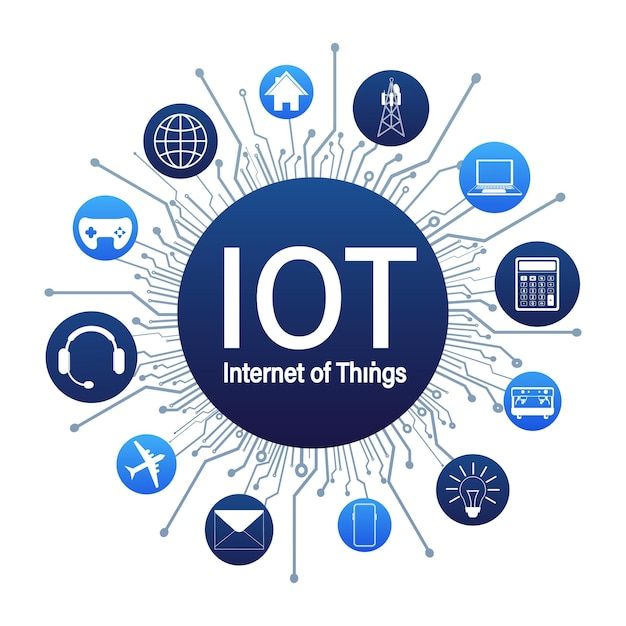
C. Smart Mobility and Transportation: IoT is at the heart of the next generation of transportation, from personal vehicles to public transit.
- Connected Cars: Modern cars are equipped with sensors that monitor everything from tire pressure to engine performance. This data is used to provide real-time navigation, predict maintenance needs, and even enable advanced driver-assistance systems.
- Autonomous Vehicles: Self-driving cars rely on a complex network of IoT sensors, cameras, and GPS to navigate roads and make decisions in real time. These vehicles communicate with each other and with the city’s infrastructure to optimize traffic flow and prevent accidents.
- Smart Public Transit: IoT sensors on buses and trains provide real-time location updates to passengers and allow city planners to optimize routes and schedules based on ridership data.
B. The Significant Benefits of IoT
The proliferation of IoT devices is not just about convenience; it offers a wide range of benefits that are improving our quality of life and creating new economic opportunities.
A. Enhanced Efficiency and Automation: IoT devices are designed to automate tasks that were once manual. This saves time, reduces human error, and improves overall efficiency. In a smart home, the lights can turn on when you enter a room and off when you leave. In an industrial setting, IoT sensors on a factory floor can monitor equipment to predict when a part is about to fail, allowing for proactive maintenance and preventing costly downtime. This level of automation is a key driver of productivity in both our personal and professional lives.
B. Better Data and Informed Decisions: The continuous stream of data from IoT devices provides unprecedented insights into our habits, our environment, and the performance of our assets. This data is used by AI algorithms to make smarter, more informed decisions. A smart city, for instance, can use data from traffic sensors to optimize traffic lights and reduce congestion. A farmer can use data from soil sensors to determine the exact amount of water and fertilizer a crop needs, leading to higher yields and less waste. This data-driven approach is transforming entire industries.
C. Improved Safety and Security: IoT can enhance our safety in a variety of ways. In a smart home, connected security systems provide a new level of protection. In our cars, sensors can alert us to a potential collision or a tire with low pressure. In a broader sense, smart city infrastructure can be used to monitor air quality, detect fires, and provide real-time updates during a natural disaster, helping public authorities respond more effectively and keep citizens safe.
C. The Challenges of a Connected World: Privacy and Security
The same connectivity that provides convenience and efficiency also creates new vulnerabilities. The more devices we connect to the internet, the more doors we open to potential threats.
A. Privacy Concerns: Every IoT device is a data collection point. A smart thermostat knows when you are home, a smart speaker listens to your conversations, and a wearable device tracks your location. This constant stream of data creates a comprehensive and intimate digital profile of your life. The lack of clear regulations on how this data is collected, stored, and used is a major concern. The potential for this data to be sold to advertisers, used for surveillance, or even linked to your identity without your consent is a significant threat to personal privacy.

B. Security Risks and Vulnerabilities: Many IoT devices are developed with a focus on convenience and low cost, often at the expense of security. These devices can become a weak link in a home or corporate network, making them vulnerable to hacking. A compromised device could be used as a gateway for hackers to access other devices on the network, steal personal information, or even launch a large-scale cyberattack. The threat is not just to digital data; a hacker could gain control of a smart lock, a connected car, or a medical device, with potentially life-threatening consequences.
C. Lack of Standardization: The IoT landscape is highly fragmented, with countless manufacturers creating devices that often do not communicate with each other. This lack of standardization makes it difficult to manage a complex network of connected devices and creates compatibility issues for consumers. It also makes it harder to implement universal security protocols, leaving many devices with outdated or inadequate protection.
In conclusion, the Internet of Things is an undeniable force that is changing our world for the better. It is making our homes smarter, our healthcare more accessible, and our cities more efficient. However, this transformation comes with a critical responsibility to address the ethical and security implications of a hyper-connected world. The future of IoT is not just about connecting more things; it’s about building a digital ecosystem that is not only intelligent and efficient but also secure, private, and trustworthy. The journey is just beginning, and our ability to harness the full potential of IoT will depend on our willingness to prioritize the security and privacy of our digital lives.

